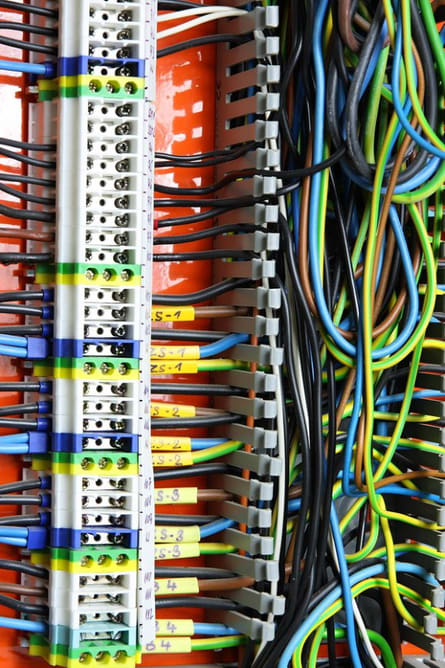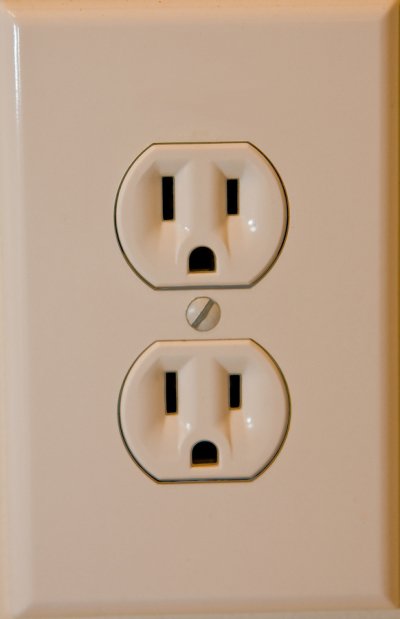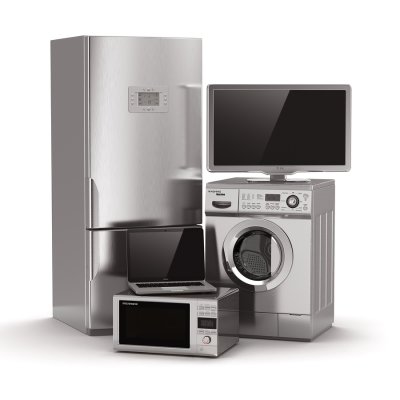-
A Look at Electrical Wiring Codes
The electrical power used by your home is a complex system that makes use of many components including electric panels, dedicated circuits, and circuit breakers in San Jose. If any electrical components are installed or maintained improperly, severe consequences may result. Watch this video clip for a look at electrical wiring codes.
Residential electrical wiring codes ensure that your home is powered consistently and wired safely in order to minimize your chances of experiencing fires, short circuits, or other potential dangers. There are different factors in play when it comes to electrical wiring inside the home, especially considering the varying amounts of voltages that different appliances use. In the case of a home renovation or a home construction there are certain tasks that homeowners may perform and there are other tasks that can only be handled by a licensed electrician. You can find out about these specific tasks by contacting your local building codes department.
-
Understanding How Circuit Breakers Work
Your circuit breaker is one of the most essential parts of your electric supply. This amazing innovation delivers power to your outlets and appliances, while making sure that you are protected from sudden electrical surges. In the event that too much electricity is sent through your home wiring, your circuit breaker will automatically shut off power to that area. In the event that you experience trouble with your electrical system, a residential electrician serving San Jose can help restore your circuit breaker to peak operating condition. Here is a complete guide to how circuit breakers work in the home.

Power Distribution Grid
Your home’s electricity comes from a device called a power distribution grid. As electricity is sent into your wiring, it travels through an electrical circuit that contains a hot wire, a neutral wire, and a ground. This system allows the electrical current from the power distribution grid to travel safely through your wiring. Your circuit breaker is at the central point of this alternating current.Resistance
Resistance is another fundamental term that is needed to understand your circuit breaker. While the power distribution grid sends a constant level of electricity through your home, each one of your appliances put up their own amount of resistance to the electrical charge. Resistance is what allows each of your appliances to operate. From your light bulbs to your refrigerator, every appliance that is connected to your wiring places its own amount of resistance against the electrical current that is flowing in your home.Circuit Protection
In the event that your current jumps above the resistance level that an appliance can handle, your circuit breaker will prevent damage to your system. The excessive electrical current will cause your circuit breaker to heat up, resulting in a blown fuse or flipped switch. When this occurs, you may need to replace your fuse, flip over your switch, or contact your local electrician for repairs. -
Electrical Panel Upgrades: What Is a Federal Pacific Warning?
A faulty or malfunctioning electric panel can pose a serious threat to your home. If your home was built between the 1950s and the 1980s, chances are that your electrical supply is connected to a Federal Pacific electric panel. These electric panels are highly dangerous, and should be replaced with brand new breaker boxes. Over the years, it has been shown that Federal Pacific electric panels do not meet the safety standards that were set by the UL. These faulty boxes can overheat, causing a building fire. If your home contains a Federal Pacific electric panel, do not hesitate to contact an electrician serving San Jose. The highly experienced electricians at a San Jose electrical company can evaluate the safety of your current electrical system. By trusting your new electrical panel upgrade to the professionals, you can rest easy knowing that your home is safe from the risk of an electrical fire.

-
Placing Outlets on a 20 Amp Electrical Circuit
Your circuit breakers are designed to ensure the safety of yourself and your family. When your home experiences a power surge, your circuit breaker will automatically shut off power to a certain area of your home. When you are building or remodeling your home , you may need to place new outlets on your electric panel. By hiring an electrician serving San Jose, you can ensure that your electrical wiring is performed safely and in accordance to electrical code. To provide you with an inside look at some of the important services offered by an electrician, here is an overview of the process of placing outlets on a 20 amp electrical circuit.

Determining Breaker Load
The first step of placing outlets on a 20 amp electrical circuit is to determine the allowable breaker load. The breaker load stands for the total amount of electricity that the circuit can handle before it becomes overloaded. As a general rule, a breaker can handle up to eighty percent of its rating. This means that the total load on a 20 amp circuit should be no more than 16 amps.Balancing the Load
Once the total allowable load has been determined, the next step is to decide which appliances and lights should be plugged into the circuit. To ensure the safety and performance of the circuit, it is a good idea to strike a balance between lights and outlets. This will ensure that the circuit does not become overloaded.Assigning Each Receptacle
Another way to prevent an overloaded circuit is to make sure that each receptacle is properly balanced. On a 20 amp circuit, this means that each receptacle should draw no more than 1.5 amps. These receptacles can be connected to fixtures and appliances using 12-guage wire. With the services of an electrician, you can ensure that your 20 amp circuit is properly set up. -
Steps Involved in Rewiring an Old House
There are many indicators that can signal it is time to rewire your home. Some of the most common signs of bad electrical wiring include inadequate power to switches or outlets, aluminum or cloth insulated wiring, ungrounded wiring, and an unsafe electrical panel. Rewiring your home can also provide additional outlets and protect your valuable electronics. Here is a look at the process of rewiring a house, including tips for choosing an electrician in San Jose .
Create an “Electrical Inventory”
The first step of rewiring your home is to create a list of all the electrical devices and appliances you’ll be using in the house, and where. Figuring out where and how you’ll be using power makes it easier for your electrician to install an adequate electrical system.
Research Local Building Codes
Building codes set electrical standards for everything from what kind of wiring is permitted to how many outlets you are allowed to put in each room. Designing and installing an electrical system that is not up to code can result in fines or having to pull out finished work.Identify Existing Infrastructure
To help your electrician perform the rewiring job as smoothly as possible, identify and mark existing electrical and plumbing infrastructure in your home. If you do not have the blueprints for your home, hire a contractor to mark pipes and existing wiring before your electrician arrives.Hire an Electrician
When you are ready to hire an electrician in San Jose, look for a licensed professional who has experience rewiring older homes in the Bay Area. Rewiring is a complex, demanding, and difficult process, so make sure the electrical company you hire is licensed, insured, and experienced. And if you aren’t sure whether your home needs to be rewired, schedule an electrical inspection to determine the best course of action. -
Which Appliances Need Individual Circuit Breakers?
An electrical circuit is simply a path through which your home’s electrical supply flows. Your electrical panel contains several circuits, each one containing a circuit breaker that stops the flow of electricity if there is a dangerous power spike or if an appliance or outlet tries to draw too much current. While appliances with higher power demands than average appliances and electronics should have their own dedicated circuit and breaker, there are other instances in which appliances with lower power ratings should also be put on a separate circuit. Here is a look at some of appliances and electronics that require individual circuit breakers, and how to have dedicated circuits installed using a residential electrician .

Power-Hungry Appliances
Most of the appliances that require their own circuit and circuit breaker are those that draw more power than average appliances and electrical devices. Common examples of power-hungry appliances include electrical ranges, wall ovens, refrigerators, heating and air conditioning units, furnaces, water heaters, washing machines, and dryers. Ask your San Jose electrician for a complete list of appliances that require dedicated circuits per the National Electric Code.Expensive Appliances and/or Electronics
When several appliances and electrical devices are on the same circuit, they all share the same electrical supply. While this is not a problem for small electricity users such as lamps and fans, expensive appliances and/or electronics might be more sensitive to power fluctuations that can occur on a shared circuit. To protect your computers, flat screen televisions, and other expensive electrical devices, have them put on a dedicated circuit.Must-Work Appliances and/or Devices
There are some appliances and electrical devices that need to work in order to protect your home and keep your family safe. Sump pumps, for example, should be put on a dedicated circuit to ensure that they don’t stop working because of a blown fuse as the result of a power surge. It is also a good idea to put your garage door opener on a dedicated circuit, seeing as your garage door weighs hundreds of pounds and a fault in the electrical supply to the opener can send all of that weight crashing down.
RECENT POSTS
categories
- Uncategorized
- Delta Electric
- Commercial Electrical
- Residential Electrical
- Electric Circuits
- Dedicated Circuits
- Circuit Breakers
- Electrical Panels
- Electrical Wiring
- Safety Inspections
- copper wires
- Electrician San Jose
- Trained Electricians
- Electrical Services San Jose
- Malfunctioning Electrical Outlets
- Circuit Breaker
- Grounding
- safety
- Flickering Lights
- Arc Fault Breakers
- electrical system
- Aluminum Wiring
- Circuit Interrupters
- House Surge Protection
- Zinsco Panel Warnings
- Wiring Conversion
- GFCI outlet
- professional electrician
- Knob-and-Tube Wiring
- modern home electrical system
- Fuses
Archives
2024
2023
2018
2017
- December (4)
- November (4)
- October (5)
- September (4)
- August (4)
- July (4)
- June (4)
- May (4)
- April (4)
- March (3)
- February (4)
- January (3)
2016
- December (3)
- November (4)
- October (4)
- September (4)
- August (4)
- July (4)
- June (4)
- May (4)
- April (4)
- March (4)
- February (4)
- January (4)
2015
- December (4)
- November (4)
- October (4)
- September (4)
- August (3)
- July (4)
- June (4)
- May (3)
- April (4)
- March (4)
- February (2)
2014
- December (3)
- November (4)
- October (4)
- September (6)
- August (2)
- July (3)
- May (2)
- April (1)
- March (2)
- February (1)
- January (1)

